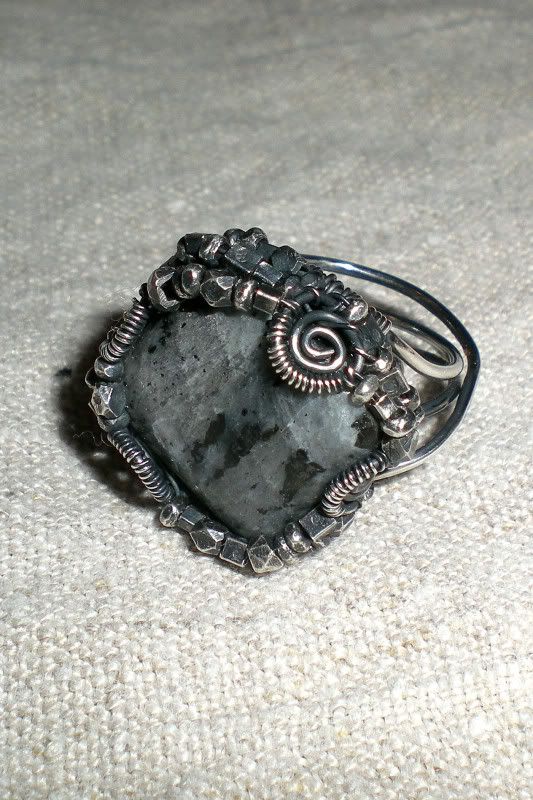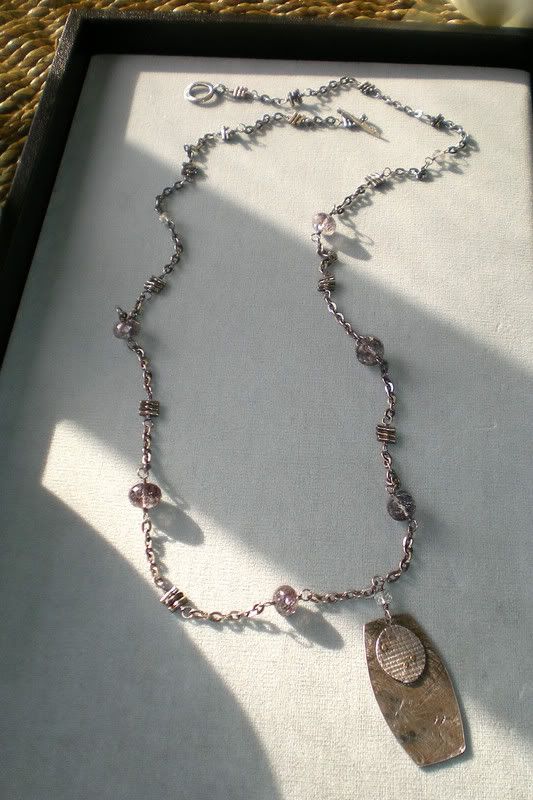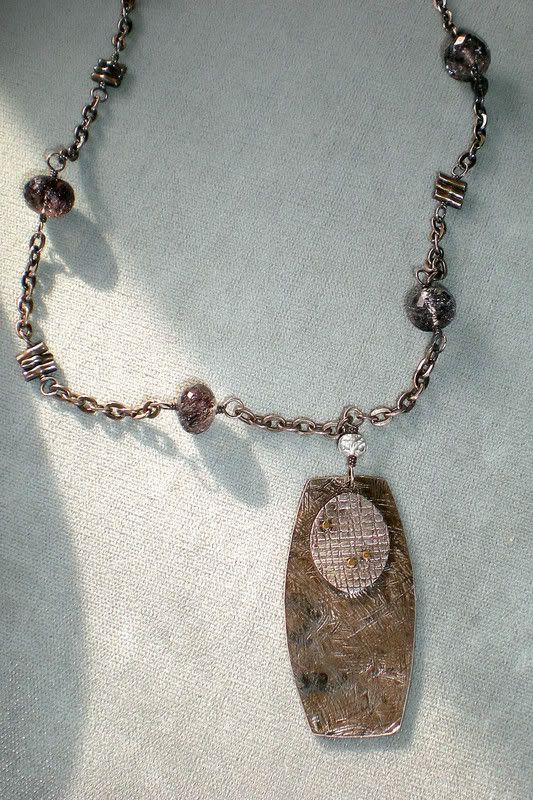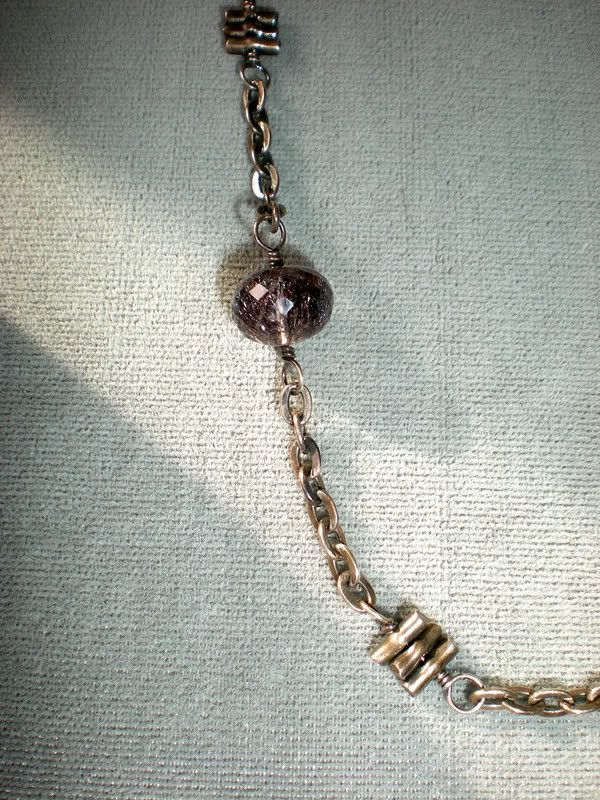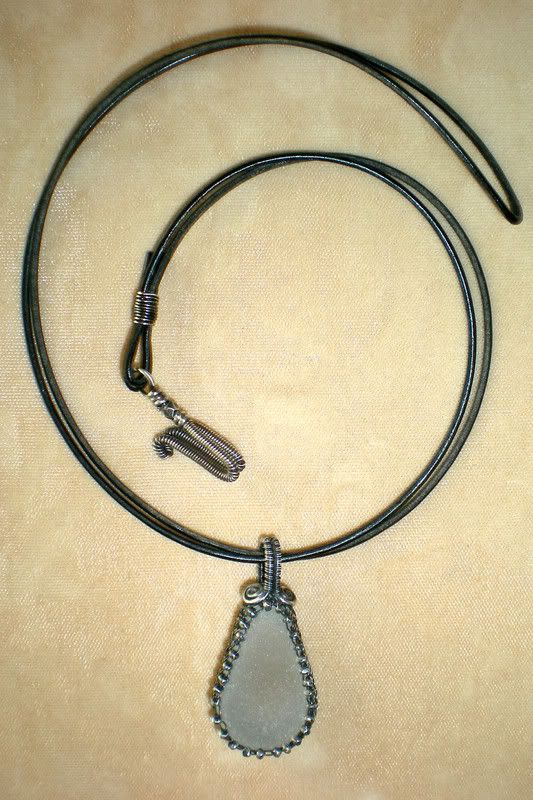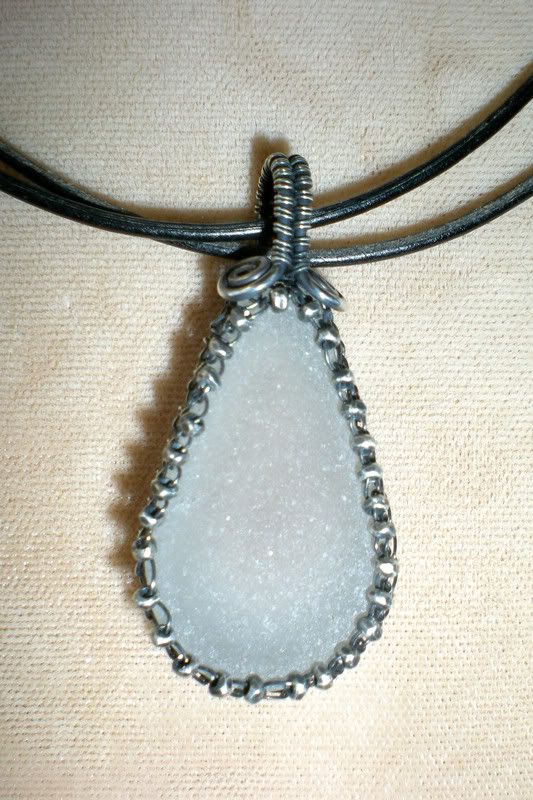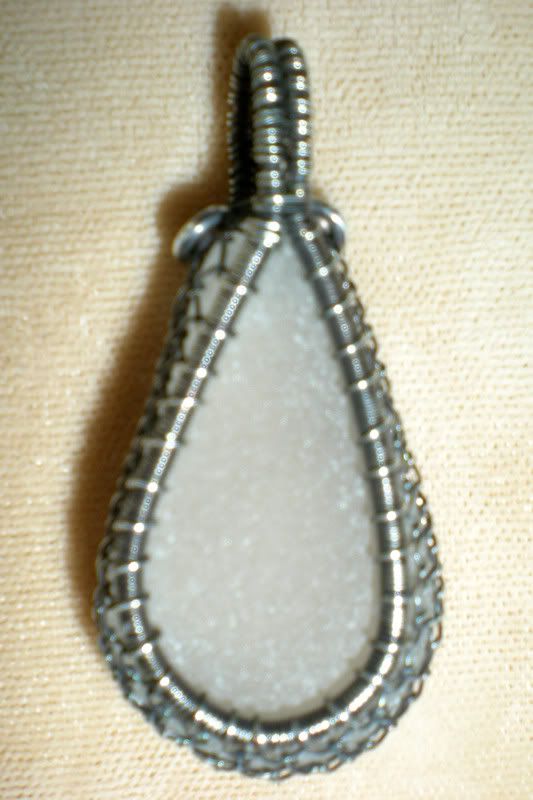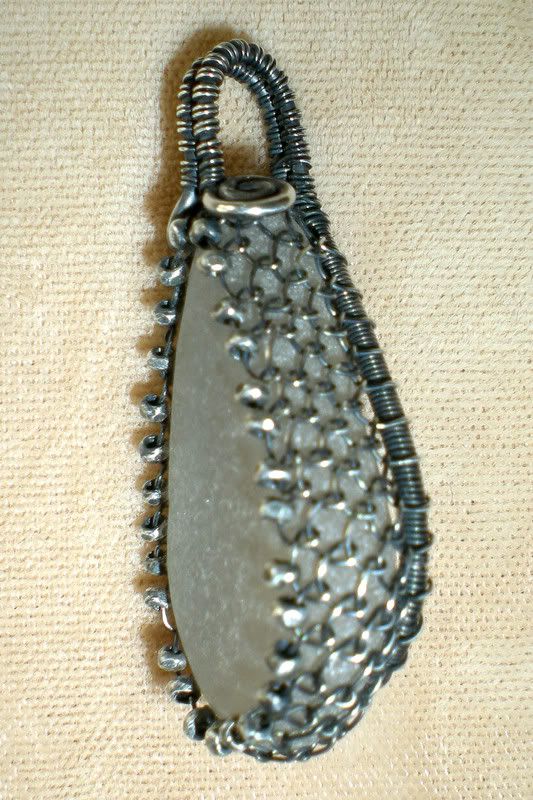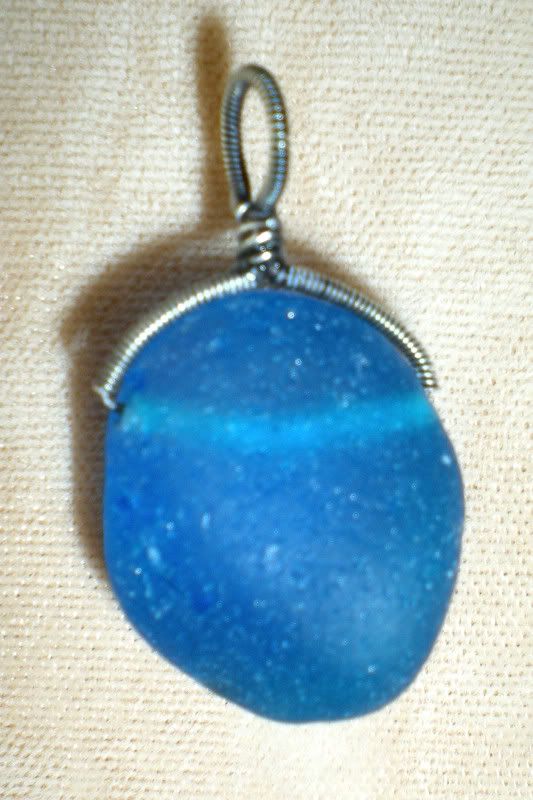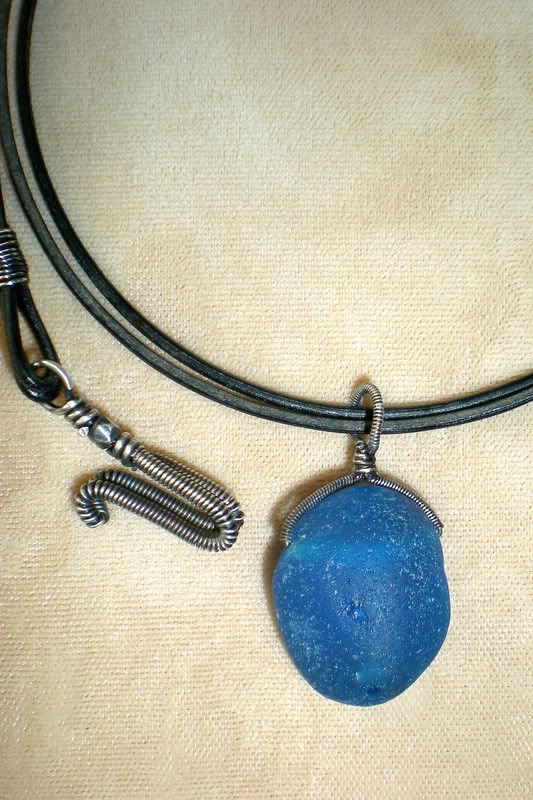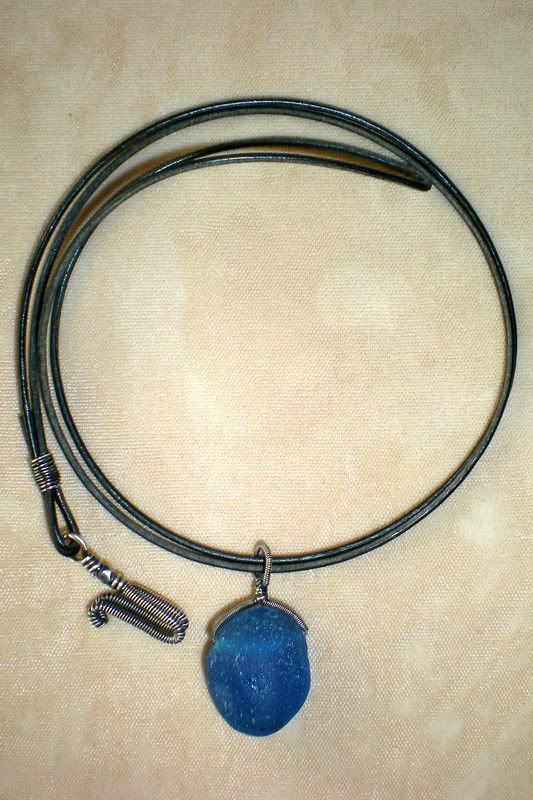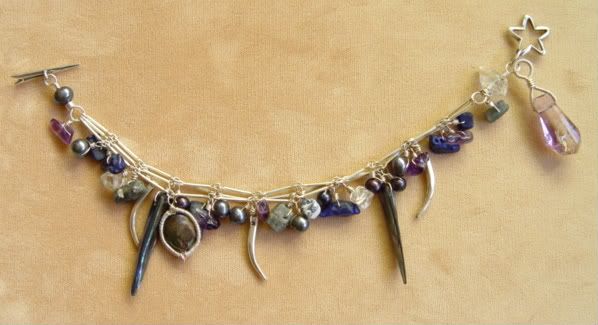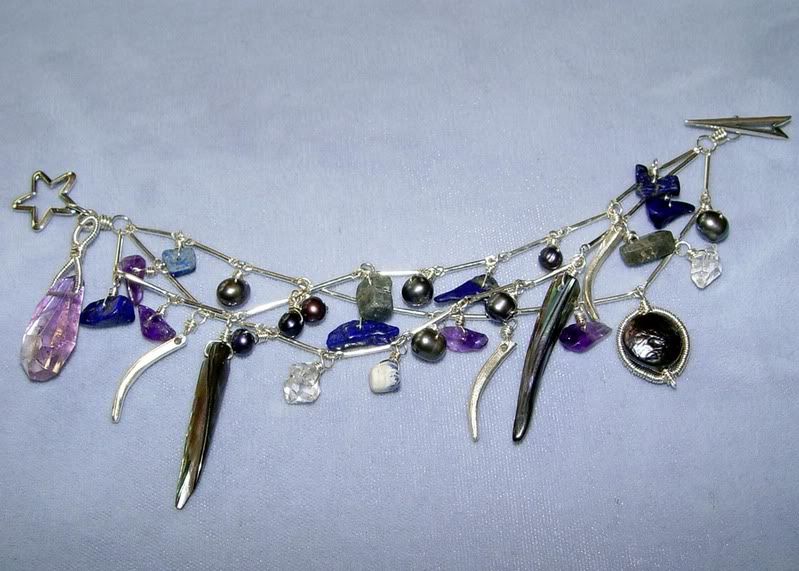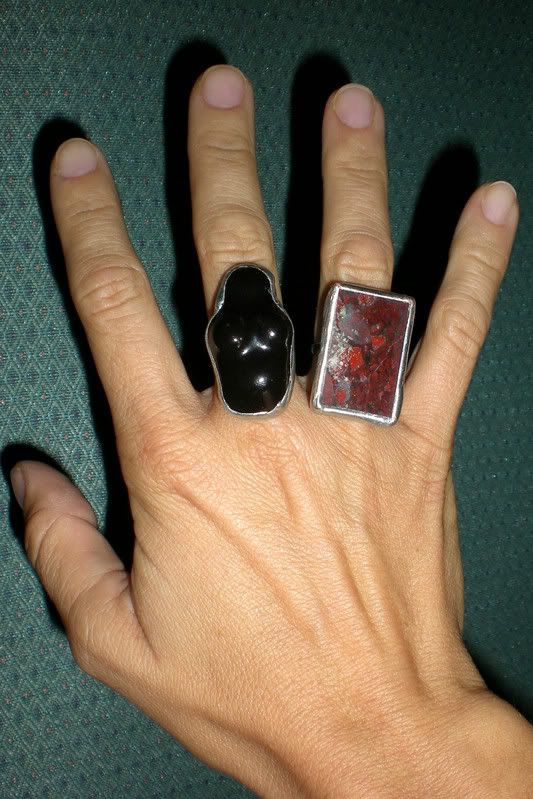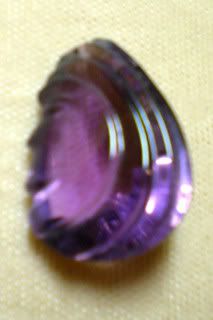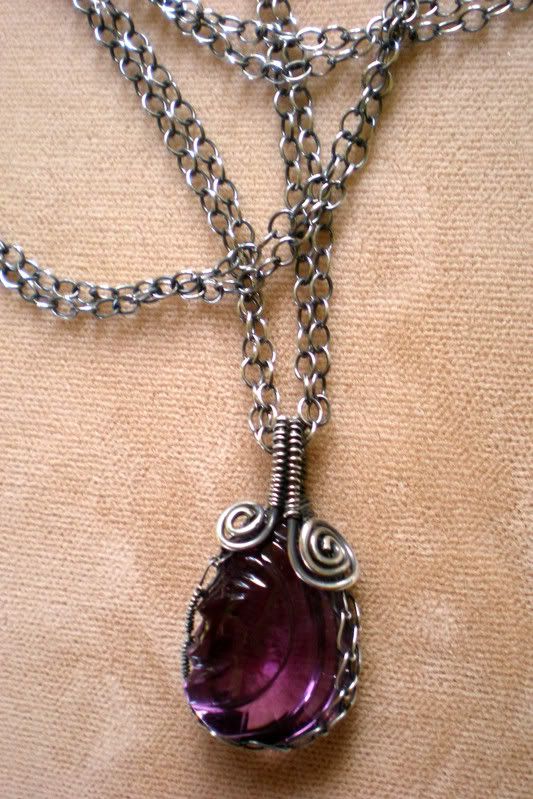So this is an adaptation of the Ornate Ring tutorial from Eni Oken. This is a practice piece in preparation for the final piece for someone who ordered it sight unseen when they were ordering other commission pieces.

Since I have done very few rings, I needed to make a piece and wear it so that I would get a feel for the construction process and how the ring wears. Rings are trickier than other things to construct for at least two reasons. The first is that rings are very size specific. So getting the wire to the correct size can be a little challenging. Then rings have to be able to withstand quite a bit of impact and general abuse, since they are moving about with the hand. So they have to be made with a fair amount of structural integrity.
This ring is basically constructed in three phases. First the part that encircles the finger and the base upon which the stone sits is bent into shape. Then coiled pieces which help to hold the stone in place are constructed and wired to the base. Finally the sides of the ring are created by wrapping thin gauge wire around the spirals, interspersed with the sterling studded detail.
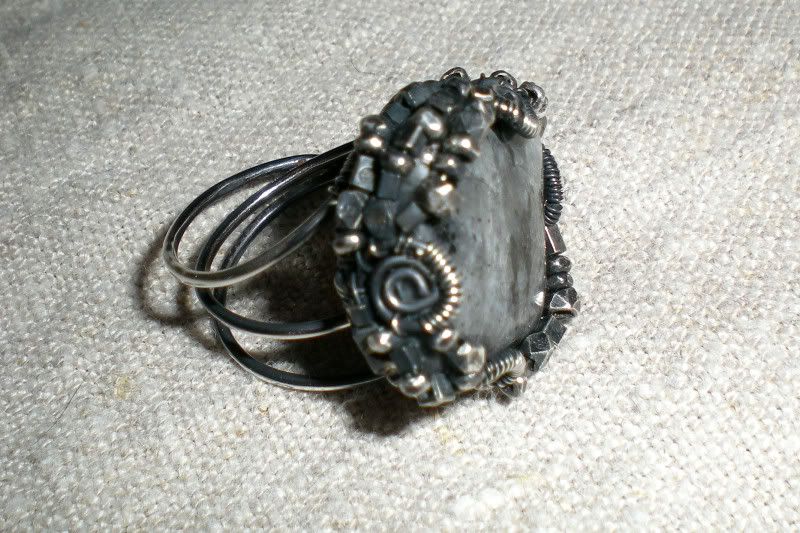
The stone in this piece is a Norwegian Moonstone. I antiqued the piece to highlight the detail, complement the darkness of the stone, plus I feel that this style lends itself to an antiqued look.
Since I have worn this piece, I now know that the final product that I will be making soon will have to have a total of four curled wire pieces, one at each corner. This ring was constructed with two. The problem with this design is that the longer sides where the thin wire is longer moves around too much. This makes me concerned that the wire could weaken and break over time with wear. So I will modify the design for that.
All in all, this is a nice dramatic occasional wear sort of ring.
